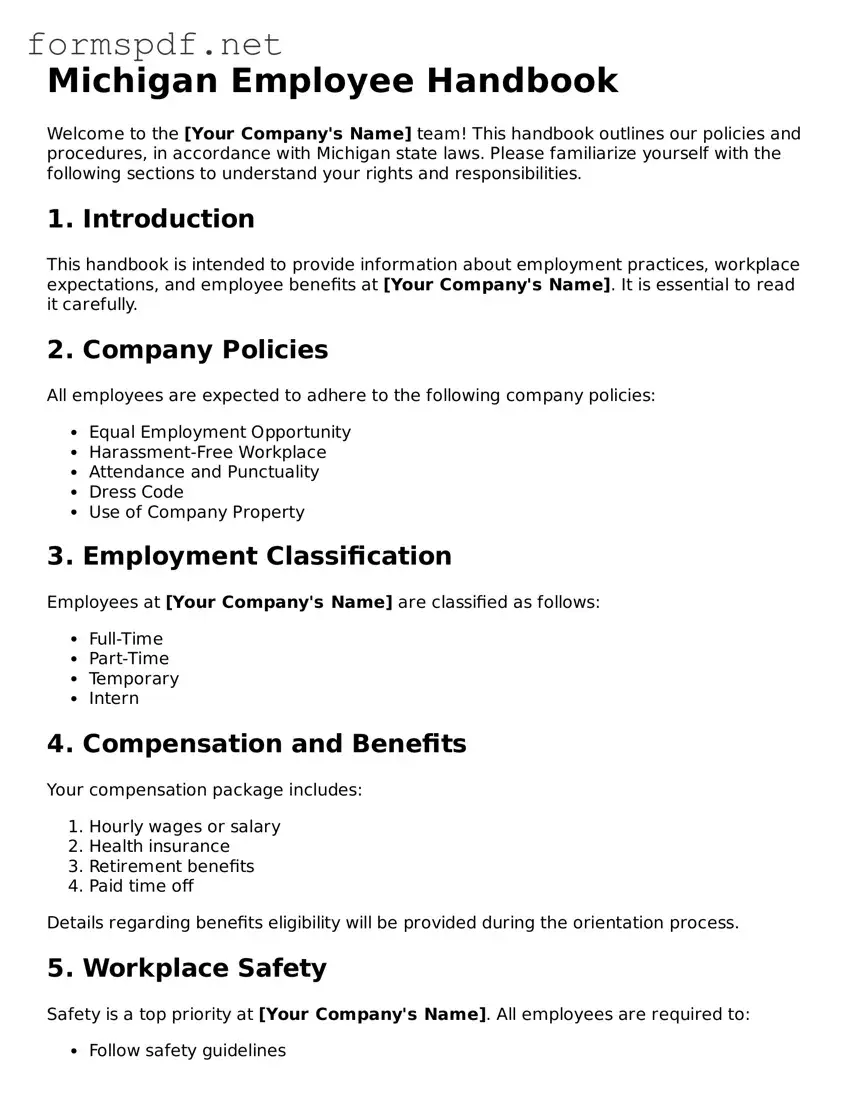Michigan Employee Handbook
Welcome to the [Your Company's Name] team! This handbook outlines our policies and procedures, in accordance with Michigan state laws. Please familiarize yourself with the following sections to understand your rights and responsibilities.
1. Introduction
This handbook is intended to provide information about employment practices, workplace expectations, and employee benefits at [Your Company's Name]. It is essential to read it carefully.
2. Company Policies
All employees are expected to adhere to the following company policies:
- Equal Employment Opportunity
- Harassment-Free Workplace
- Attendance and Punctuality
- Dress Code
- Use of Company Property
3. Employment Classification
Employees at [Your Company's Name] are classified as follows:
- Full-Time
- Part-Time
- Temporary
- Intern
4. Compensation and Benefits
Your compensation package includes:
- Hourly wages or salary
- Health insurance
- Retirement benefits
- Paid time off
Details regarding benefits eligibility will be provided during the orientation process.
5. Workplace Safety
Safety is a top priority at [Your Company's Name]. All employees are required to:
- Follow safety guidelines
- Report unsafe conditions
- Participate in safety training
6. Employee Conduct
Expected behaviors at [Your Company's Name] include:
- Respectful communication
- Punctuality
- Team collaboration
- Accountability
7. Disciplinary Action
In the event of policy violations, disciplinary actions may include:
- Verbal warning
- Written warning
- Suspension
- Termination
8. Acknowledgment
Please sign below to acknowledge your understanding of the policies outlined in this handbook:
Employee Name: [Employee's Name]
Signature: ___________________________
Date: __________
